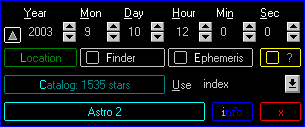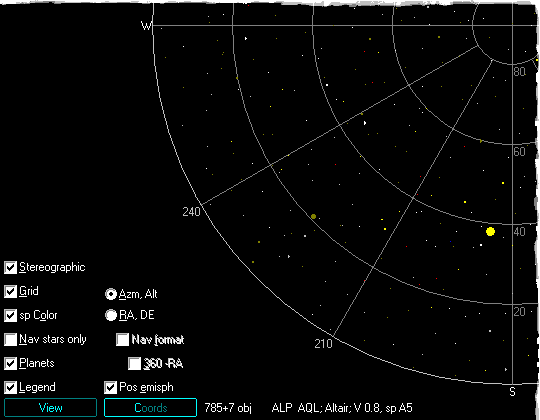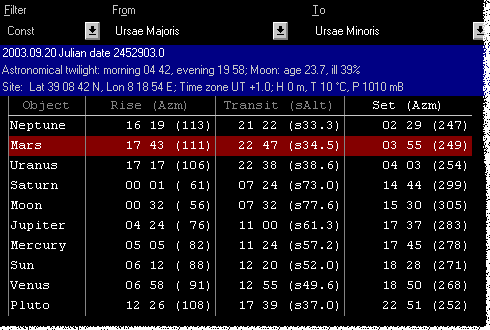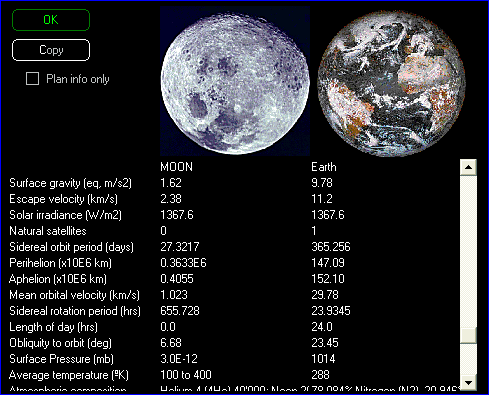|
|
|
| |||||
|
| |||||
| LabInf > Home > Shareware Sofware > Astro 2 | |||||
|
|
|
|
 |
|
Italian text samples |
| ||||||||||
| ||||||||||||||||
 Set UT (Universal Time) for Ephemeris and Finder (if visible, automatically updates).
Set UT (Universal Time) for Ephemeris and Finder (if visible, automatically updates).
 Stereographic or parallel projection of objects you want display using View options and based on coordinate type you choosed - altitude and azimuth or right ascension and declination - with Coords.
Stereographic or parallel projection of objects you want display using View options and based on coordinate type you choosed - altitude and azimuth or right ascension and declination - with Coords.
 Computer ephemeris with fundamentals coordinates of stars, sun, planets and moon - altitude and azimut or hour angle or (360-)right ascension and declination - in astronomical or for navigation purpose format. Rise, transit and set with azimut and altitude are also computed.
Computer ephemeris with fundamentals coordinates of stars, sun, planets and moon - altitude and azimut or hour angle or (360-)right ascension and declination - in astronomical or for navigation purpose format. Rise, transit and set with azimut and altitude are also computed.
 You can filter stars to display and, if you want, sort them on a field.
You can filter stars to display and, if you want, sort them on a field.
 nell'immagine quella per la luna - dove vengono confrontati i dati relativamente alla terra.
Just a right click to display this window - this is the moon one - where you can read data compared with the hearth's data.
nell'immagine quella per la luna - dove vengono confrontati i dati relativamente alla terra.
Just a right click to display this window - this is the moon one - where you can read data compared with the hearth's data.
 |
| Laboratorio di Informatica |